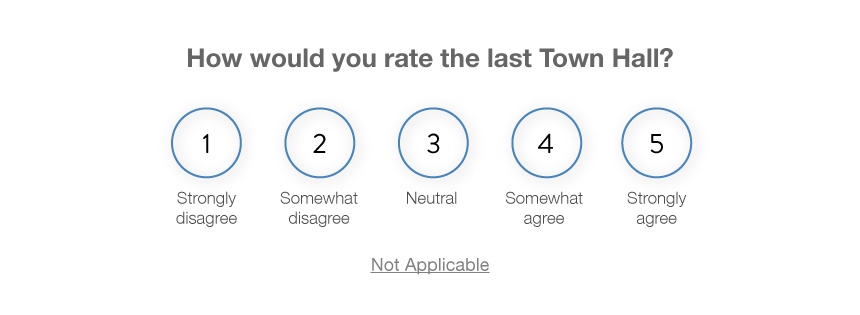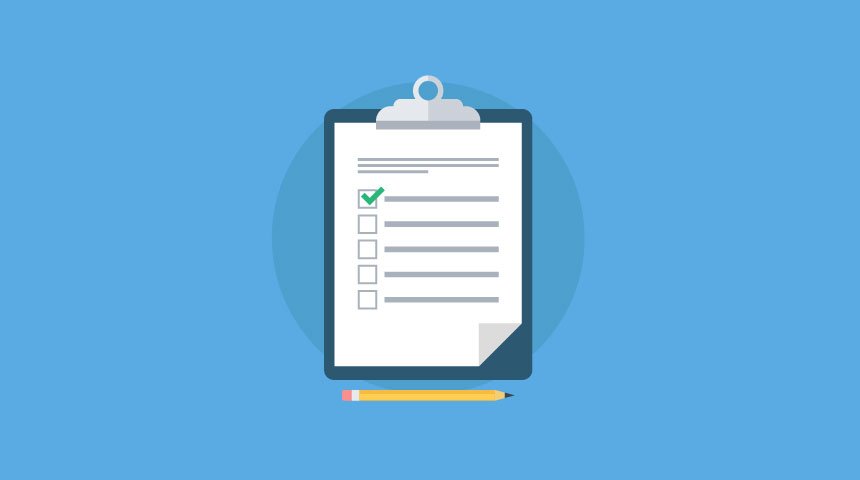You've heard us go on and on about pulse surveys. It’s no surprise that we’re big fans.
That’s because pulse surveys are super versatile — they can be used for a wide variety of internal comms and employee engagement functions. For communicators in particular, pulse surveys are a super effective way to find out which kind of content really resonates with your employees.
But how do you use a pulse survey to boost employee engagement?
Where do you start?
What should you measure?
How do you choose the right question?
And how can you use the pulse survey data and momentum to fuel change?
Here’s what you need to know to plan your first pulse survey — and how to get the feedback and data you need to influence change:
Download our Pulse Survey Planning Kit here.
Step 1: Figure out what are you measuring and why you're measuring it
The first step in planning your first employee pulse survey is to decide what you want to measure.
There are about a million different things you could measure with an employee pulse survey. But it might be good to start with something straightforward — like the reception of your last town hall meeting.
When choosing what to measure, it’s very important to consider the following:
- Why do you want to measure it?
- What kind of results are you expecting? How will you interpret those results?
- Will the responses be accurate?
- Will you be able to take action based on the results?
- Are employees or leadership interested in what you are measuring?
Let’s walk through these questions with an example scenario:
Scenario: You noticed a lot of employees are on their phones during the town hall. And you also heard some audible groans and complaints about the distracting phone presence. But leadership won’t take action or let you suggest changes without real evidence of discontent. You feel like things could be improved, so you’re going to do a pulse survey to get the data you need to influence change.
- Why do I want to measure employees' responses to the last town hall?
-
You want to show employees that your organization is interested in their feedback and invested in making their work experience better.
-
You want to find out how they perceive the town halls so you can judge if your team needs to invest in making improvements.
-
If the data shows people aren’t enjoying town halls, you want to take that data to leadership. Then, you can get approval for making any necessary changes to increase engagement.
-
- What kind of results am I expecting? How will I interpret those results?
Based on the rumors you’ve heard — and what you’re seeing during the town halls — you expect medium to low ratings from a majority of respondents. You will take this kind of response to mean that change is needed to engage employees. In this case, you will need additional feedback to make positive changes.
It’s also possible that employees don’t actually dislike the town hall, but the few that are vocal about their discontent are making the most noise. In this case, you expect the results to be more positive, with higher ratings for the town hall.
- Will the responses be accurate?
You’re slightly concerned that people will be hesitant to express their true feelings about the town hall if it could be traced back to them.
To counteract these concerns, you will communicate that the data is collected anonymously and reinforce the message that employee participation is vital to making a better workplace for everyone.
(You can use this template to make sure everyone is educated and ready to participate.)
- Will I be able to take action based on the results?
If a majority of respondents give the town hall a low rating, you will have some data-backed justification for taking the problem to leadership so you can make changes.
And by enabling anonymous comments for open-ended feedback on how to improve town halls, you’ll be able to contextualize the ratings. You’ll also be able to map out your post-survey action plan.
If you do not see any polarization in the data, taking action to change the town hall won’t really be (or, rather, shouldn’t be) a priority.
But a neutral or unexpected result doesn’t mean you can’t take action. Regardless of the outcome of the survey, this data can help you set a baseline or benchmark for measuring the reception of future town halls.
- Are employees or leadership interested in what I am measuring?
In this scenario, town halls are mandatory — which is a great reason to make sure they are useful and engaging for employees. Employees are interested in town halls insofar as they are a source of information and provide a deeper look at what is going on within the company. At their best, they can give employees a glimpse of the bigger picture and provide context for day-to-day work in the company.
Leadership is interested in town halls insofar as they are important for encouraging employee advocacy. In leaders’ eyes, town halls are part of a good communication strategy, and good for the company and employer brand — as well as engaging employees in the workplace. It’s in the organization’s best interest to optimize the town halls so they can benefit from better engagement and advocacy.
Step 2: Get buy-in from leadership
If you can answer all of the questions listed above, you will have a much easier time convincing leadership that planning a pulse survey is a worthwhile pursuit.
But here’s the thing: you need to make sure you have leadership buy-in, which means more than just approval.
Your leaders need to understand how the survey works, why it matters, and how it will specifically benefit the organization. With leadership buy-in, you will have the support you need when it comes time to take action based on the pulse survey results. And with this support, you’ll also establish a united front that really cares about addressing employee feedback and improving company culture.
Step 3: Avoid asking the wrong questions
A poorly-worded question or an inappropriate response scale or type can render your data useless. As such, it’s important to make sure your questions are actually gathering the information you want, and the response scale or response type you use is the correct way to measure that information.
Here are some examples of bad question/response scale combinations:

This question/scale combination is poor because the question is leading and the response scale doesn’t allow the respondent to give a meaningful answer.

This question/scale combination doesn’t work because the response scale is inappropriate for the question and therefore won’t collect meaningful data.

At first glance, this scale combo seems fine. The issue is that this question warrants a response that’s more nuanced than a binary “Yes” or “No.” In this case, you won’t get the kind of data that you need. It is likely that people don’t feel binary about the topic. Opinions on a town hall are more nuanced than just liking it or not liking it, so this response type will likely skew your data and not give you actionable results.
Step 4: Send your pulse survey
Now it is time to make sure your employees know what’s coming. That means sending out an email explaining what you’re doing, why you’re doing it, and how the gathered information will be used.
We’ve created a great template specifically for this type of communication that you can steal and copy-paste into your email. Check it out here.
Next, you need to decide whether you want to send out the survey as a stand-alone email or as a part of a newsletter. Some pulse surveys will do well as stand-alone, especially if you want to measure something timely before people forget.
For example, if your regular newsletter isn’t scheduled for release immediately following the Town Hall, people’s emotions may change or wane — or they may lose interest to the point that they don't even feel like responding to a survey. That’s when a stand-alone approach might make the most sense.
Plan your first pulse survey with this free worksheet and presentation template
Are you ready to plan your first pulse survey?
Download our Pulse Survey Planning Kit (which includes a Pulse Survey Planning Worksheet + Pulse Survey Leadership Presentation Template) to get started.

Read more about employee surveys:
- Employee Surveys: Guidelines, Tips, and Examples
- The Best Way to Get Employees Onboard with Pulse Surveys [Free Template]
- Why Pulse Surveys Are An Internal Communicator’s Best Friend
- The 3 Best Pulse Survey Questions for Employee Feedback
- 10 Employee Pulse Survey Questions You Should be Asking
- How Often Should You Send Employee Pulse Surveys?
- How to Calculate Employee Advocacy with NPS-style Surveys




